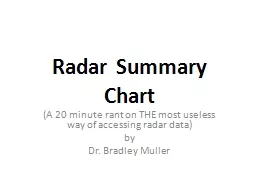PDF-SUMMARY OF PRODUCT CHARACTERISTICS
Author : elina | Published Date : 2022-08-31
1 ANNEX I 2 NAME OF THE MEDICINAL PRODUCT Circadin 2mg prolongedrelease tablets QUALITATIVE AND QUANTITATIVE COMPOSITION Each prolongedrelease tablet contains 2mg
Presentation Embed Code
Download Presentation
Download Presentation The PPT/PDF document "SUMMARY OF PRODUCT CHARACTERISTICS" is the property of its rightful owner. Permission is granted to download and print the materials on this website for personal, non-commercial use only, and to display it on your personal computer provided you do not modify the materials and that you retain all copyright notices contained in the materials. By downloading content from our website, you accept the terms of this agreement.
SUMMARY OF PRODUCT CHARACTERISTICS: Transcript
1 ANNEX I 2 NAME OF THE MEDICINAL PRODUCT Circadin 2mg prolongedrelease tablets QUALITATIVE AND QUANTITATIVE COMPOSITION Each prolongedrelease tablet contains 2mg melatonin Excipientith known effec. Daniel Toro-Gonzalez. Ph.D. candidate. , School of Economic Sciences (SES). Jill J. McCluskey. Visiting Professor, Cornell University and. Professor, SES, Washington State University and. Ron C. Mittelhammer. How to Handle Your Greatest Leadership Challenges. by EQUIP Ministries founded by John Maxwell. 1. 1. Lesson: T306.01 iteenchallenge.org 01 - 2012. Characteristics of a Giant Killer. Lesson 5 – SS . I can describe human characteristics in Michigan. . Let’s Review . On a notecard, pick 2 topics and share 1 fact for each topic. Please write neatly. . Landforms. Bodies of Water. (. A . 20 minute rant . on THE most useless . way of accessing . radar . data). by. Dr. Bradley Muller. The . Radar Summary chart. —an outmoded way of looking at radar data.. It is a computer-generated mosaic of radar echo intensity contours based on the Radar Weather Reports (SD/ROB) text product. . quality . Aaron Maitland, . Westat. Heather . Ridolfo, . NASS. James . Dahlhamer, . NCHS. Antuane . Allen, . NCHS. Dynesha Brooks, NCHS. Background and Motivation. Questionnaire. Interviewer. Respondent. Vocabulary. Key Vocabulary/Concept. Definition. adages. An old, short saying that is generally accepted to have some truth to it. (. The early bird gets the worm. Better safe than sorry. Nothing ventured, nothing gained. Jared . Coplin. and Martin . Burtscher. Department of Computer Science. 1. Introduction. GPU-based accelerators. Used in high-performance computing. Spreading in PCs and handheld . devices. 2. Power Characteristics of Irregular GPGPU Programs . Demographic characteristics include population, birth rate, death rate, sex ratio, migration, population changes, age composition, individual family size etc. There is need to study population in order to determine the characteristics of the end-user of technological innovations. The word population could be categorized into rural or urban based on where they live. They study of rural sociology concentrates on the rural population. biomeasure. of . estrogenization. in a community-based population of older women. Natalia . Gavrilova. , PhD. 1,2. Annie Dude, MD, PhD. 1. ; . Joscelyn. N. Hoffmann, AB. 3. ; . . Martha K. McClintock, Ph.D.. Key Concepts. Asexual and sexual reproduction. Inheritance. Learning outcomes. Distinguish between asexual and sexual reproduction and describe examples of each type of reproduction.. Describe types of variations found within a species and determine whether they are discrete or continuous.. Luke 14:7-24. Three Christian Characteristics:. Humbling oneself . (Luke 14:7-11; Prov. 29:23; 18:9-14, James 4:10; Matt. 23:5-12, I Pet. 5:5-6). Three Christian Characteristics:. Humbling oneself . Does a burning candle show signs of life?. http://www.youtube.com/watch?v=nGdbA0LyIpE. List the characteristics of the following:. House. Puppy. Flower. Water. Which are living?. House. Puppy. Flower. © Taylor & Francis 2015. SOCIETAL CHARACTERISTICS. Exercising individual rights often requires . that a . person is competent and gives consent.. Rights may be abridged through the courts appointing a guardian.. What makes something Alive?. Movement?. Water moves. What makes something Alive?. Breathing,. eating?. Fires needs oxygen. and fuel. What makes something Alive?. reproduction?. r. obots can be . Programmed to.
Download Document
Here is the link to download the presentation.
"SUMMARY OF PRODUCT CHARACTERISTICS"The content belongs to its owner. You may download and print it for personal use, without modification, and keep all copyright notices. By downloading, you agree to these terms.
Related Documents














